Electrical Upgrades
Landscape lighting not only enhances the visual appeal of your outdoor space but also plays a vital role in improving safety and security.
Natasha Guernsey • March 7, 2025
Landscape security Lighting
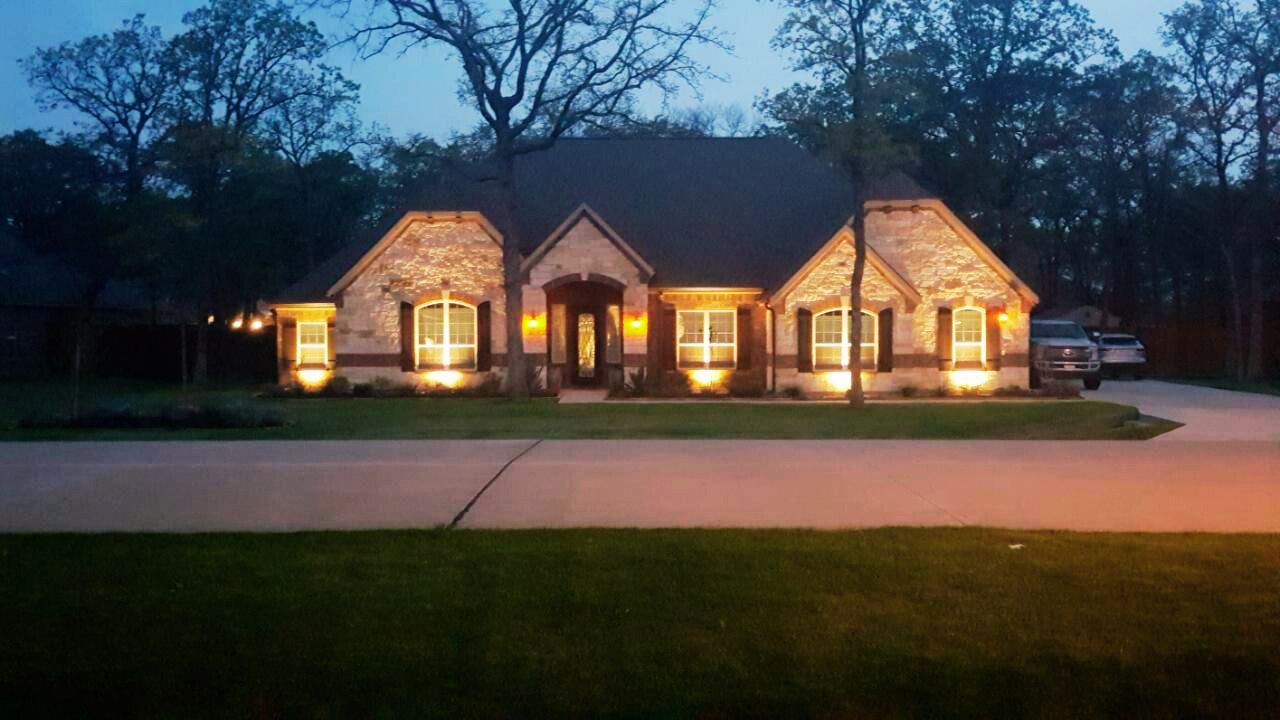
Landscape lighting not only enhances the visual appeal of your outdoor space but also plays a vital role in improving safety and security. Strategically placed lights illuminate walkways and entry points, minimizing the risk of trips and falls. Additionally, a well-lit yard serves as a deterrent to trespassers, making your home a less appealing target for intruders.
Here’s a brief look at how landscape lighting contributes to safety and security:
It creates a welcoming ambiance for evening gatherings while ensuring safe navigation through your garden after dark. Moreover, it allows you to care for your seasonal plants at any time, maximizing your gardening experience.
While many homeowners prioritize high-tech security measures such as surveillance cameras and smart locks, outdoor lighting is often overlooked. Beyond its decorative function, it plays a key role in reinforcing home security. This guide explores the various ways landscape lighting can help safeguard your property.
By keeping outdoor areas well-lit, landscape lighting discourages intruders from attempting to approach unnoticed. A home surrounded by bright lighting, particularly around its perimeter, pathways, and entrances, significantly reduces the chances of unauthorized access. In contrast, dimly lit or shadowy areas provide cover for trespassers, making your property more vulnerable to security risks.

Lighting technology has evolved — and LED (Light-Emitting Diode) lighting is leading the way. The future of home lighting is here, and it’s brighter, more efficient, and more affordable than ever. At Light It Up Electric , we’re helping Aubrey homeowners transform their homes with advanced LED lighting solutions that offer stunning illumination and long-term savings. Unlike traditional bulbs, LED lights use up to 80% less energy, last significantly longer, and produce less heat — making them ideal for every room in your home. Whether you’re updating your kitchen, living room, or outdoor spaces, LED technology delivers the perfect balance of performance and efficiency. ✨ Why Switch to LED Lighting: Uses less energy than traditional bulbs Provides long-lasting brightness for years Comes in various styles and color tones Reduces electricity bills and maintenance costs Eco-friendly and better for the planet 💡 Upgrade your home with the latest lighting technology. Visit https://www.lightitupelectric.net to learn how Light It Up Electric can bring the future of lighting to your Aubrey home today.
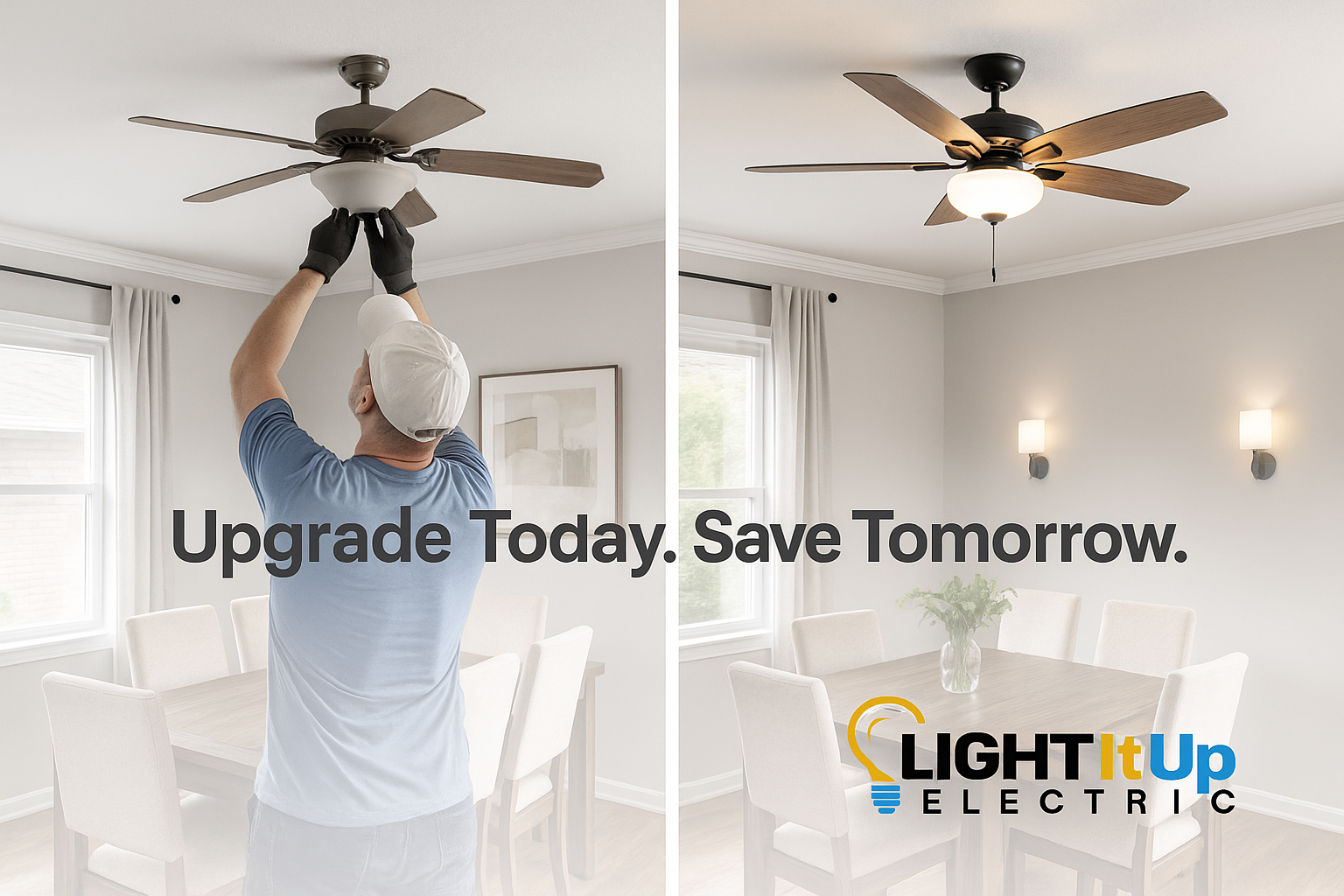
Are your old appliances driving up your electricity bill? Outdated ceiling fans, dryers, and other household appliances use significantly more energy than modern, efficient models. Upgrading to ENERGY STAR–rated appliances is one of the best ways to reduce your monthly costs and improve your home’s performance. While new appliances may require an upfront investment, the long-term savings make them well worth it. According to the U.S. Department of Energy, energy-efficient appliances can use 10–50% less electricity than older models — lowering your bills and reducing strain on your home’s electrical system. At Light It Up Electric , we help North Dallas homeowners modernize their homes with professional electrical upgrades and safe, efficient appliance installations. From wiring your new energy-saving ceiling fan to installing dedicated circuits for your laundry or kitchen, our licensed electricians ensure your upgrades are done right. ✨ Benefits of Upgrading to Energy-Efficient Appliances: Lower monthly electricity costs Reduce energy waste and improve home performance Increase comfort with modern, efficient technology Extend the lifespan of your electrical system Enhance your home’s value and sustainability 💡 Smart upgrades today mean big savings tomorrow. Visit https://www.lightitupelectric.net/north-dallas-electrician to schedule your energy-efficient appliance installation with Light It Up Electric — your trusted electricians in North Dallas, TX.

Are your old light fixtures and bulbs costing you more than they should? Upgrading your home lighting is one of the simplest and most effective ways to save energy, enhance comfort, and boost your home’s appearance. Whether you’re swapping out outdated bulbs for LED lighting or hiring a professional electrician for a complete lighting upgrade, you’ll enjoy long-term energy savings and a brighter, more modern home. LED lights use far less electricity than traditional incandescent bulbs, making them an ideal cost-saving, eco-friendly option for McKinney homeowners. Not only do they last years longer, but they also reduce your energy usage and maintenance costs. At Light It Up Electric , our licensed electricians specialize in professional lighting installations, energy-efficient upgrades, and full electrical system improvements to help your home operate smarter — not harder. ✨ Benefits of Professional LED Lighting Upgrades: Use up to 80% less energy than traditional bulbs Lower your monthly electric bills Create a cleaner, brighter atmosphere Extend the lifespan of your lighting system Add modern style and value to your home 💡 Save money, energy, and time — all while improving your home’s look and efficiency. Visit https://www.lightitupelectric.net/electrician-mckinney-tx to schedule your lighting upgrade consultation today!

Did you know that not all light bulbs are created equal when it comes to energy use? Older bulbs waste more electricity and cost you more every month. By upgrading to modern, energy-efficient lighting, you can make your Frisco home brighter, greener, and more cost-effective. According to the U.S. Department of Energy, replacing your most-used light bulbs with ENERGY STAR–certified bulbs can save you up to $75 per year on your electric bills. These bulbs use 70–90% less energy than traditional incandescent bulbs and last much longer — meaning fewer replacements and more savings. At Light It Up Electric , we help Frisco homeowners make simple yet impactful changes that boost energy efficiency. Whether you’re upgrading your lighting, adding smart switches, or scheduling an electrical inspection, our licensed electricians are ready to make your home shine — efficiently. ✨ Why Choose Energy-Efficient Lighting: Save money on your monthly electric bill Use up to 90% less energy than traditional bulbs Enjoy longer-lasting light and reduced maintenance Improve the comfort and ambiance of your home Reduce your environmental footprint 💡 Brighten your Frisco home the smart way. Visit https://www.lightitupelectric.net to learn more about energy-efficient lighting installations with Light It Up Electric — your trusted local electricians.
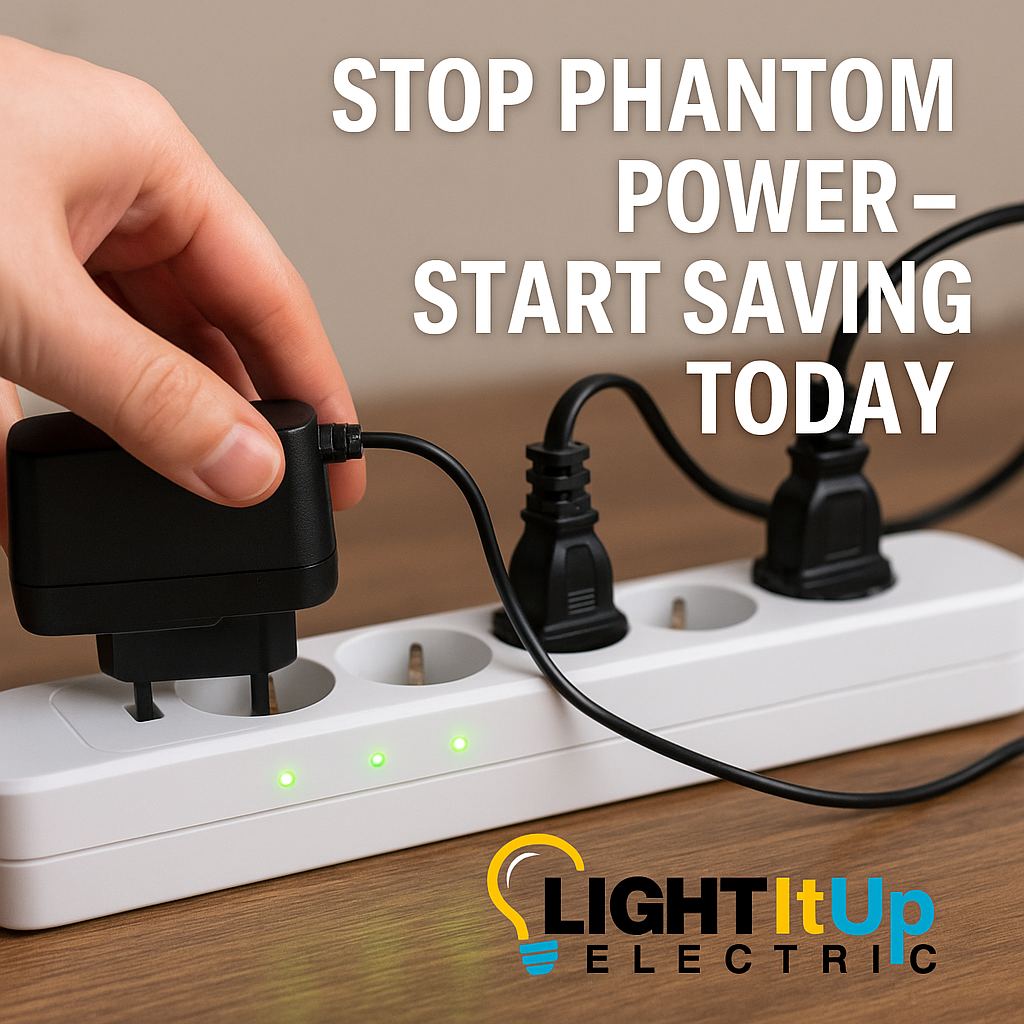
Every home in Aubrey, TX is filled with modern electronics — TVs, gaming consoles, chargers, computers, and smart devices — all of which use electricity even when turned off. These small but constant energy draws, known as phantom loads, can add up fast and increase your monthly electric bill. The good news? You can stop energy waste easily with an advanced power strip. Unlike traditional power strips, advanced models automatically shut off power to devices that aren’t in use, preventing standby energy drain. This simple upgrade can help you reduce your home’s energy usage, lower electricity costs, and make your household more efficient — all without changing your daily routine. At Light It Up Electric , our licensed electricians help Aubrey homeowners find and install smart, energy-saving solutions like advanced power strips, LED lighting, and smart home upgrades. ✨ Benefits of Using an Advanced Power Strip: Stops electronics from using energy when not in use Reduces monthly electricity costs Easy to install and operate Extends the life of your electronics Makes your home more energy-efficient 💡 Simple solutions can make a big difference. Visit https://www.lightitupelectric.net to schedule your energy-efficiency consultation today with Light It Up Electric, proudly serving homeowners in Aubrey, TX and surrounding areas.
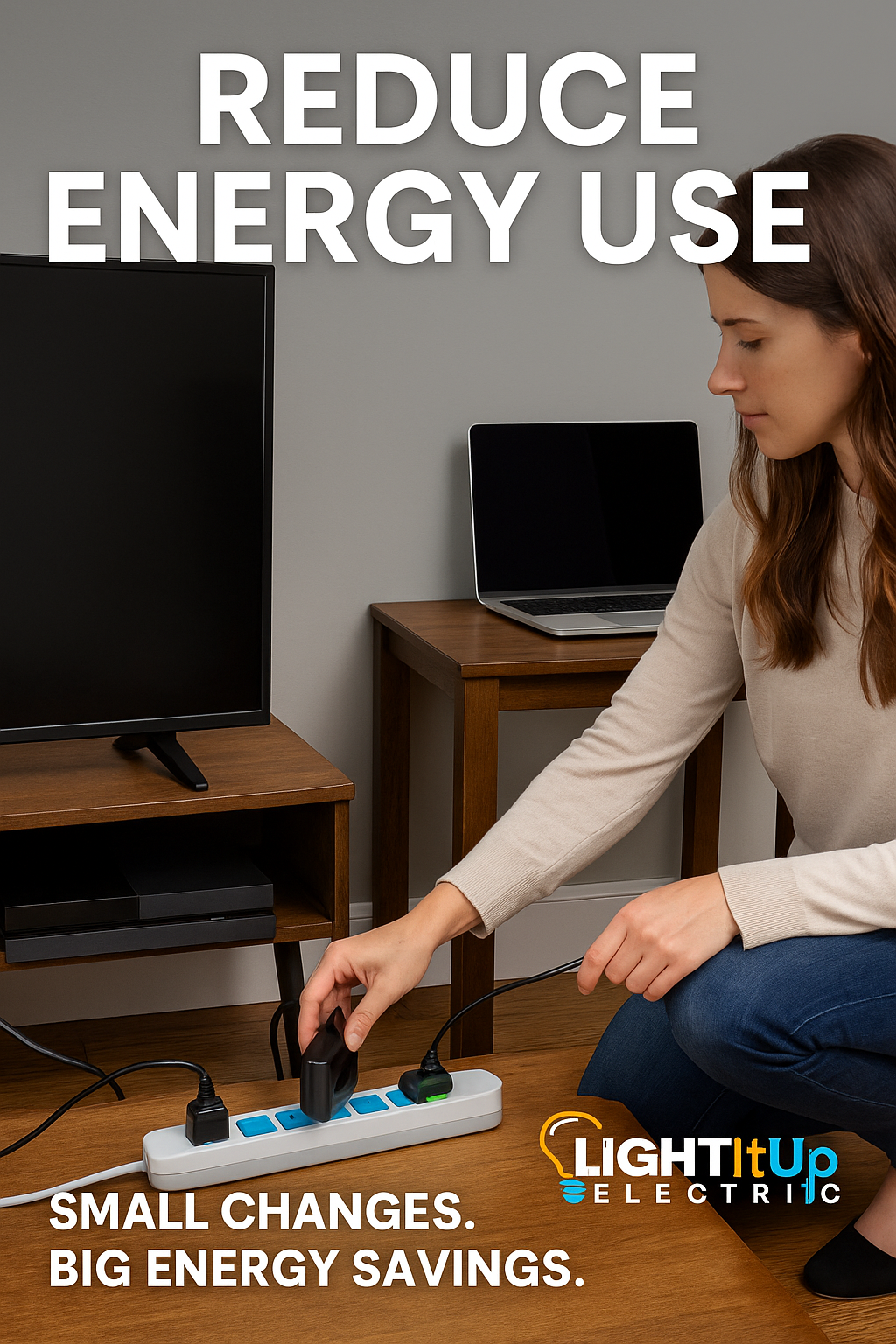
With so many devices, lights, and systems running in your home every day, it’s no surprise that energy bills can climb quickly. The good news? You can take simple, effective steps to reduce energy use and lower monthly costs — starting with an advanced power strip. Traditional power strips continue to draw energy even when your devices are turned off. By switching to smart or advanced power strips, you can automatically cut off standby power to TVs, gaming consoles, and computers — saving both energy and money. At Light It Up Electric , we help North Dallas homeowners find practical ways to make their homes more efficient. From smart lighting installations to energy-saving electrical upgrades, our licensed electricians make it easy to reduce waste and maximize performance. ✨ Simple Ways to Cut Energy Use at Home: Use advanced power strips to eliminate phantom energy drain Upgrade to LED lighting and smart dimmers Schedule a professional electrical inspection to identify wasted energy Unplug or automate devices you don’t use regularly Consider energy-efficient appliance upgrades 💡 Save energy. Save money. Live brighter. Visit https://www.lightitupelectric.net/north-dallas-electrician to schedule your home energy efficiency consultation today!

It’s easy to take electricity for granted until the monthly bill arrives. From TVs and computers to dishwashers and freezers, your home’s everyday appliances can add up quickly when it comes to energy use. According to national energy data, these household devices — including televisions, computers, dryers, dishwashers, and freezers — make up a significant portion of your overall electricity costs. The more you understand where your energy goes, the easier it is to manage consumption and start saving. At Light It Up Electric , we help McKinney homeowners identify where energy is being wasted and recommend smart electrical solutions that lower costs without sacrificing comfort or convenience. ✨ Top Tips to Reduce Energy Waste in Your McKinney Home: Upgrade to energy-efficient appliances and LED lighting Use smart plugs and timers to limit standby power Schedule regular electrical maintenance to ensure systems are running efficiently Turn off or unplug devices when not in use Install dimmer switches and motion sensors for smarter lighting control 💡 A little awareness goes a long way. Learn more at https://www.lightitupelectric.net/electrician-mckinney-tx and start saving energy with Light It Up Electric — your trusted electricians in McKinney, TX.

Do you know where most of your electricity goes each month? According to the U.S. Energy Information Administration (EIA), the average American household uses the majority of its energy on cooling, lighting, and water heating — three areas where smart upgrades can lead to major savings. For Plano homeowners, understanding how your home uses power is the first step toward lowering bills and improving energy efficiency. Here’s what the data shows: Cooling makes up 18% of household energy use — more than any other category. Lighting and water heating each account for 9%. Refrigeration and space heating both make up about 7% of total energy use. At Light It Up Electric , we help you take control of your energy usage with smart electrical solutions designed to lower costs and improve efficiency. From LED lighting upgrades to smart thermostat installations, our licensed Plano electricians can help you save energy where it matters most. ✨ Energy-Saving Upgrades for Plano Homes: Install energy-efficient lighting and dimmers Upgrade your HVAC system and thermostat Schedule an electrical inspection to find hidden inefficiencies Switch to LED lighting for better brightness and lower bills 💡 Small upgrades can lead to big savings. Visit https://www.lightitupelectric.net/electrician-plano-tx to schedule your consultation today with Light It Up Electric — Plano’s trusted energy experts.
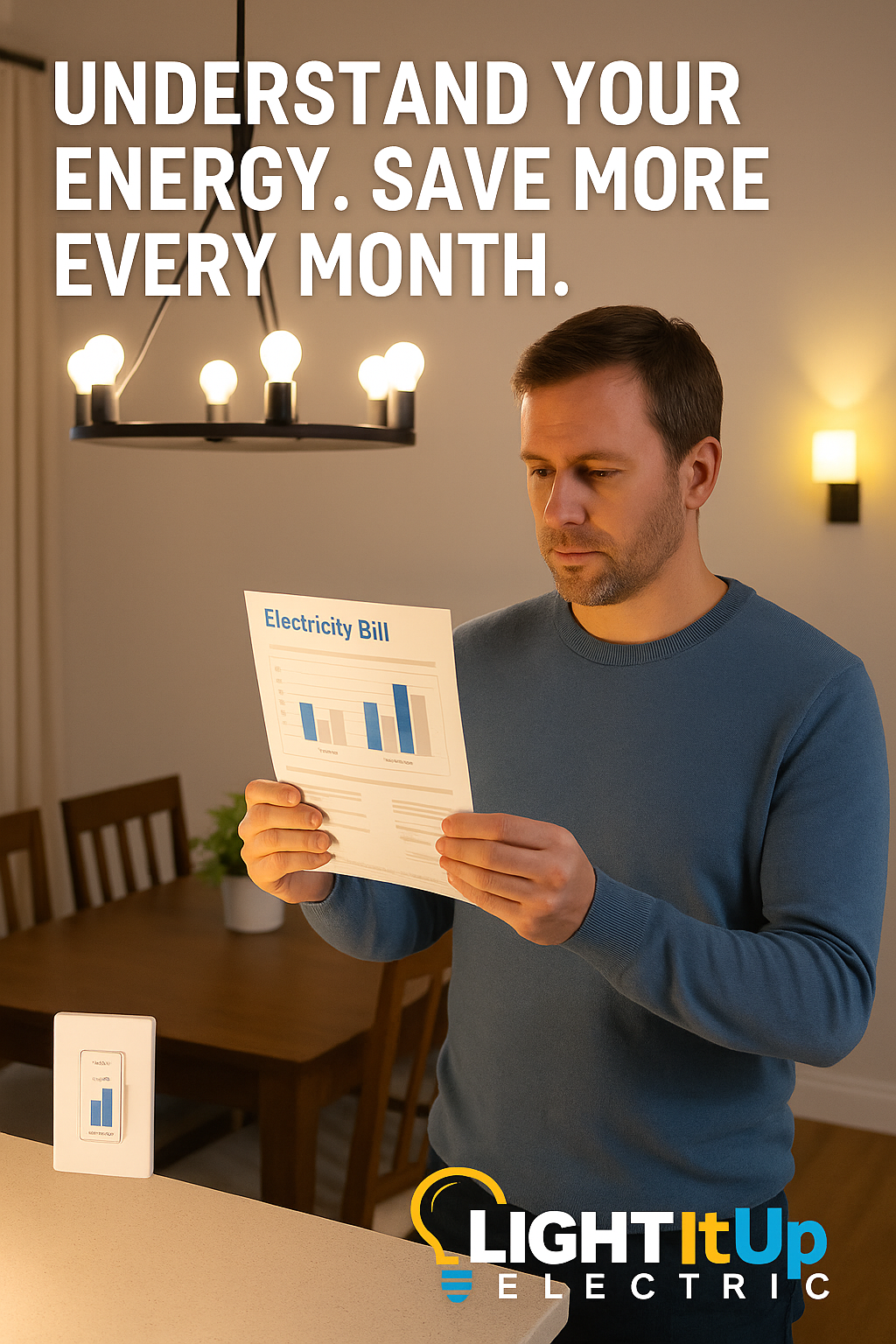
Have you ever wondered how much electricity your home actually uses? You can find the answer right on your monthly energy bill. Many Frisco homeowners are surprised to see just how much power goes into everyday living — from lighting and appliances to air conditioning and entertainment systems. At Light It Up Electric , we help Frisco homeowners better understand their home’s electrical usage and discover ways to make it more efficient. Modern technology makes it easier than ever to track your energy consumption — some utility companies even provide comparison charts that show how your usage this year stacks up against last year. By learning where and how you use the most power, you can make informed decisions about energy-efficient upgrades, LED lighting installations, and smart home systems that can significantly reduce your costs and environmental impact. ✨ Ways to Get Smart About Your Home’s Energy Use: Review your monthly energy bill for usage patterns and trends Upgrade to energy-efficient lighting and appliances Install smart thermostats and dimmers for better control Schedule an electrical inspection to identify energy waste 💡 The first step to saving energy is understanding how you use it. Visit https://www.lightitupelectric.net to learn how Light It Up Electric can help you make your Frisco home more efficient today.

A well-lit dining room does more than make meals enjoyable — it makes your entire space more functional. Whether you’re hosting a dinner party, playing board games with the family, or enjoying an evening with friends, the right lighting ensures everyone can see, interact, and feel comfortable. At Light It Up Electric , we help Aubrey homeowners design and install lighting that makes every moment shine. From bright overhead fixtures to adjustable dimmers and accent lights, our licensed electricians create lighting solutions that are perfect for both dining and entertainment. A fully illuminated room not only enhances visibility but also highlights your dining setup — from table décor to platters of food and refreshments. Our experts can help you find the perfect balance between style, brightness, and energy efficiency. ✨ Why Aubrey Homeowners Choose Light It Up Electric: Custom lighting designs to fit your dining space Dimmable and adjustable light options Energy-efficient LED and smart lighting solutions Licensed, insured, and experienced electricians 💡 Transform your dining room into a bright, welcoming space. Visit https://www.lightitupelectric.net to schedule your lighting installation in Aubrey, TX today!

